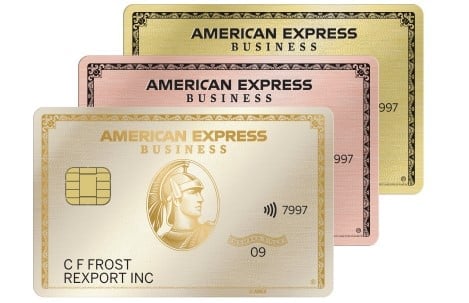SBA Working Capital Pilot Program: What It Is and How to Apply
The SBA Working Capital Pilot program can help you access affordable working capital for your small business.
Many, or all, of the products featured on this page are from our advertising partners who compensate us when you take certain actions on our website or click to take an action on their website. However, this does not influence our evaluations. Our opinions are our own. Here is a list of our partners and here's how we make money.
The SBA Working Capital Pilot (WCP) program offers business lines of credit as part of the SBA 7(a) loan program. Although the SBA also offers lines of credit through the CAPLines program, the WCP program is designed to provide greater flexibility and serve a wider range of small-business owners.
Like other SBA loans, WCP lines of credit provide large funding amounts, competitive interest rates and long terms. These small-business loans can be a good option for established businesses that want access to working capital.
How much do you need?
We’ll start with a brief questionnaire to better understand the unique needs of your business.
Once we uncover your personalized matches, our team will consult you on the process moving forward.
What is the SBA Working Capital Pilot program?
The SBA Working Capital Pilot program is an SBA loan program that offers business credit lines that are partially guaranteed by the U.S. Small Business Administration. These working capital lines of credit are issued by participating lenders, typically banks and credit unions.
The WCP is a pilot loan program, meaning these products are available from a limited time unless the program is extended or made permanent. Currently, the program is set to run from Aug. 1, 2024 through July 31, 2027.
As part of the SBA's new Made in America Manufacturing Initiative, the agency plans to expand use of the WCP program.
Pilot loan programs, including this one, fall under the umbrella of the SBA 7(a) loan program and follow many of that program’s guidelines.
How does the SBA Working Capital Pilot program work?
SBA Working Capital Pilot lines of credit are available up to $5 million and can be used for a variety of working capital needs.
There are two types of credit lines available through this program:
Transaction-based. These business lines of credit can be used for a single or multiple purposes during the term. Transaction-based WCP credit lines may be revolving or non-revolving based on the needs of the business.
Asset-based. These products are revolving lines of credit that are backed by specific collateral, in the form of a monthly borrowing base certificate (BBC). A BBC reports the value of your assets, usually accounts receivable and inventory, that support your credit line amount.
With both types of WCP lines of credit, your lender must perform a review on an annual basis (at a minimum). As part of this process, it will need to document that you are creditworthy, can make your payments and are compliant with the WCP program requirements.
If you can’t meet these criteria, the lender will not be able to approve any further draws nor renew the credit line until the requirements are met.
Who should use the SBA Working Capital Pilot program?
The SBA Working Capital Pilot program was created to offer affordable working capital to small businesses, allowing them to take advantage of growth opportunities. In particular, this program can be a good option for borrowers who:
Want flexible financing. Compared to a traditional term loan, the SBA WCP program provides greater flexibility for short-term funding needs, such as individual projects or orders. The program’s unique guarantee fee structure also makes this type of shorter-term financing more cost-effective.
Operate globally. You can use the SBA Working Capital Pilot program’s line of credit to support both domestic and international orders. If you’re just getting started in the export business, you can use the line of credit to expand your reach without having to get a separate credit line.
Don’t meet the specific guidelines of the CAPLines program. To qualify for a business line of credit through the CAPLines program, you’ll need to meet more specific eligibility and use of proceeds requirements. The SBA Working Capital Pilot program line of credit can be used for more general working capital needs.
SBA Working Capital Pilot program features
Terms
The maximum term on a SBA Working Capital Pilot line of credit is 60 months. For this program, the “term” refers to the period of time in which the lender agrees to lend you this credit. Your lender can, however, set independent loan “maturities” (usually on an annual basis) to take place during the term.
In other words, your maturity would dictate your repayment period. If your lender sets a maturity of one year, for example, you would need to make your final repayment on any funds you borrowed by the end of those 12 months.
Interest rates
Interest rates on SBA Working Capital Pilot lines of credit are the same as SBA 7(a) loan rates. This means that rates are set based on the prime rate, plus a spread that’s negotiated between you and your lender. Rates can be fixed or variable, but are subject to SBA maximums, which are determined by the size of your credit line.
Currently, fixed rates range from 13% to 16% and variable rates range from 10.5% to 14%.
Fees
Like other SBA 7(a) loans, your lender can charge a variety of fees on top of interest, including:
Service and packaging fees.
Extraordinary service fees.
Out-of-pocket expense fees.
Late payment fees
The SBA guarantee fee, however, works differently for the WCP program than it does for other loans. For the WCP program, you pay an annual short-term guarantee fee. The lender charges a proportional amount of this fee for each year your line of credit is in use.
The benefit of this structure is that you pay a short-term fee for a one-year term, rather than for a long-term maturity (which is how you would pay it for other types of 7(a) loans).
Pros and cons of the SBA Working Capital Pilot program
Competitive interest rates.
Large credit line amounts.
Can be used for a variety of working capital needs.
Option for one-on-one counseling with SBA Export Finance Managers.
Can be hard to qualify.
Slow to fund.
Requires collateral and personal guarantee.
SBA Working Capital Pilot program requirements
To qualify for an SBA line of credit from the WCP program, you’ll need to meet the standard set of SBA loan requirements, including:
Must be a for-profit business, in an eligible industry, operating in the U.S.
Must be a small business, as defined by the SBA.
Must be able to show your creditworthiness and ability to repay the loan.
Can't get the desired loan on reasonable terms from other lenders.
Must be able to demonstrate the need for a loan and show the business purpose for which you’ll use the funds.
Cannot be delinquent on any existing government loans.
Owners of 20% or more of the business must provide a personal guarantee.
You’ll also need to meet program-specific requirements, which include the following:
Must have a history of at least 12 full months of operations (i.e. generating revenue from your business operations).
Must be able to provide timely and accurate financial statements, accounts receivable and accounts payable aging reports and inventory reports.
Keep in mind that although the SBA doesn’t define credit score or annual revenue requirements, you’ll need to meet these qualifications as set by your lender. In general, it’s helpful to have good credit (a score of 690 or higher) and strong revenue.
Not sure you can meet these strict requirements? If you’re a new business, check out our guide to startup business lines of credit for more flexible options. If you have a lower credit score, explore our picks for bad credit business loans.
How to apply for the SBA Working Capital Pilot program
To apply for a line of credit through the SBA Working Capital Pilot program, you’ll work directly with a participating lender, like a bank or credit union. If you have a pre-existing relationship with a financial institution, you might reach out to ask if it offers this type of SBA loan.
Although the application process will vary based on your SBA lender, you’ll generally need to provide:
SBA Form 1919, Borrower Information Form.
SBA Form 912, Statement of Personal History.
Personal financial statement (you can use SBA Form 413).
Business financial statements, such as balance sheets, profit and loss statements and projected financial statements.
Accounts receivable and accounts payable aging reports and applicable inventory reports.
Business certificate or license.
Loan application history.
Income tax returns.
Existing debt schedule, if applicable.
Resumes for each business owner.
Business overview and history.
Business lease.
For this program, the lender will also require a lien on any collateral associated with transactions that you finance using your WCP credit line. This may include inventory, accounts receivable and contract proceeds, among other assets.
Once you submit your application, the underwriting and closing processes can take anywhere from 30 to 90 days. SBA Preferred Lenders may offer faster processing times, as they can issue loans without prior SBA approval.
» MORE: How to apply for an SBA loan





